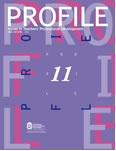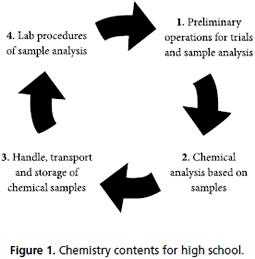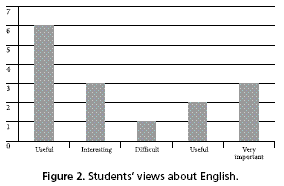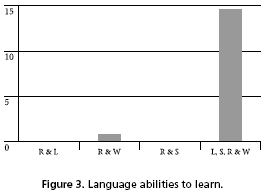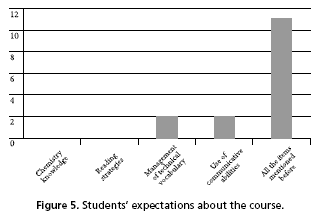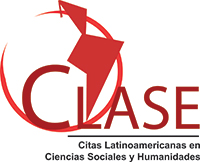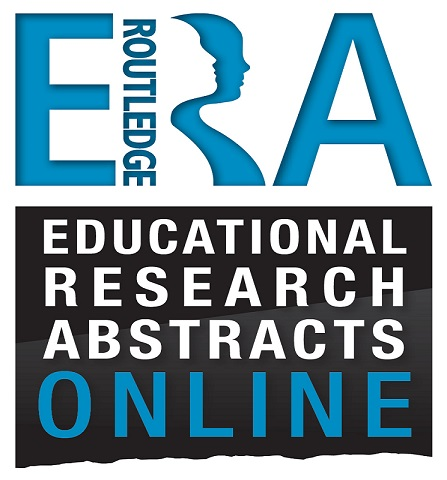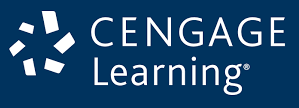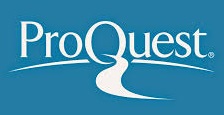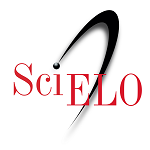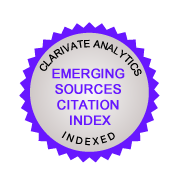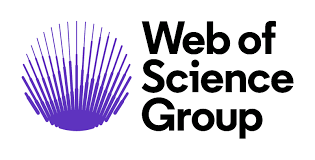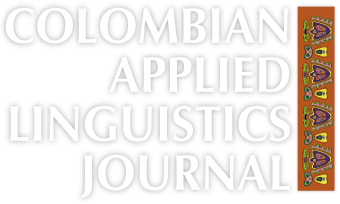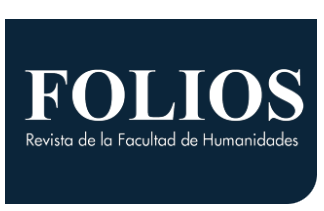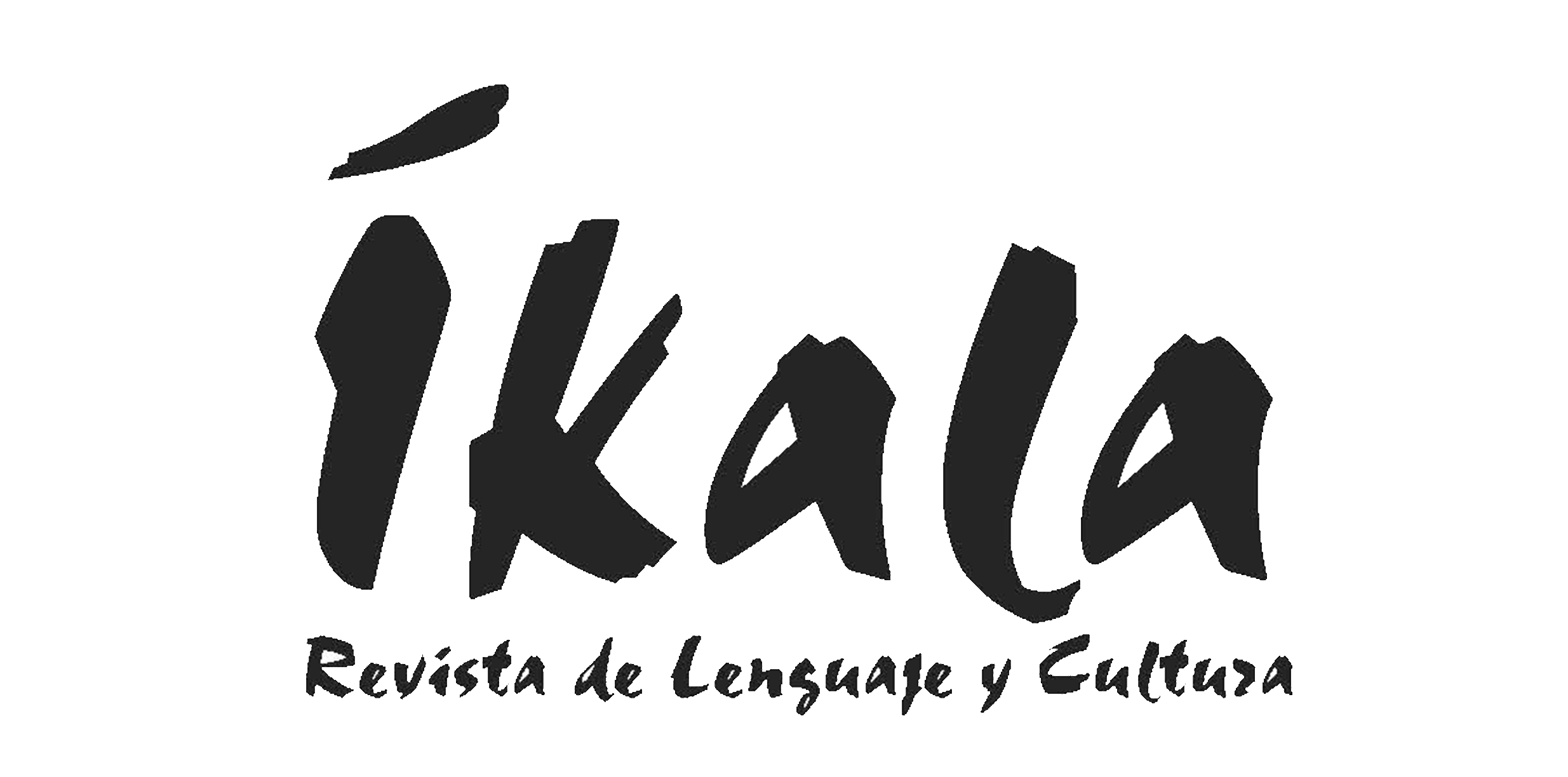An English Syllabus with Emphasis on Chemistry: A Proposal for 10th Graders of a Public School in Colombia
Un plan de estudios en inglés con énfasis en química: una propuesta para estudiantes de grado décimo de una institución pública en Colombia
Keywords:
English for specific purposes, creative thinking, chemistry, curriculum design (en)inglés para propósitos específicos, pensamiento creativo, química, diseño curricular (es)
This article describes the process followed to design an English syllabus with emphasis on chemistry. It was focused on 10th grade students as they started a connection with a program named “Chemical Samples Analysis”. In that attempt, esp (English for Specific Purposes) and creative thinking theories were taken into account. A students’ questionnaire, teacher’s audio-taped interviews and a teacher researcher journal comprised data for the research. It was found that the English class needs to be reorganized by taking into account students’ needs and interest and by integrating the four language skills. This way the English language process can become more meaningful.
Este artículo describe el proceso que se siguió al diseñar un plan de estudios de inglés con énfasis en química, el cual se enfocó en estudiantes de grado 10.º, quienes iniciaron una conexión con el programa “Análisis de muestras químicas”. Se tomaron en cuenta las teorías de inglés para propósitos específicos y pensamiento creativo. Para la recolección de datos se emplearon un cuestionario para los estudiantes, entrevistas grabadas a los docentes, cuestionarios para los estudiantes y un diario de campo de la docente investigadora. Se concluyó que la asignatura de inglés necesita reorganizarse teniendo en cuenta las necesidades e intereses de los estudiantes y mediante la integración de las cuatro habilidades del lenguaje. De esta manera el proceso de aprendizaje del inglés puede ser más significativo.
An English Syllabus with Emphasis on Chemistry: A Proposal for 10th Graders of a Public School in Colombia*
Un plan de estudios en inglés con énfasis en química: una propuesta para estudiantes de grado décimo de una institución pública en Colombia
Sandra Juanita López Clavijo**
IED Fernando Mazuera Villegas, Bogotá - Colombia, E-mail: sjuanitalop@yahoo.com Address: Carrera 2 # 30B-52, Torre 3, apto. 106, Parque Residencial Barbados iii. San Mateo. Soacha, Colombia.
This article describes the process followed to design an English syllabus with emphasis on chemistry. It was focused on 10th grade students as they started a connection with a program named “Chemical Samples Analysis”. In that attempt, esp (English for Specific Purposes) and creative thinking theories were taken into account. A students’ questionnaire, teacher’s audio-taped interviews and a teacher researcher journal comprised data for the research. It was found that the English class needs to be reorganized by taking into account students’ needs and interest and by integrating the four language skills. This way the English language process can become more meaningful.
Key words: English for specific purposes, creative thinking, chemistry, curriculum design
Este artículo describe el proceso que se siguió al diseñar un plan de estudios de inglés con énfasis en química, el cual se enfocó en estudiantes de grado 10.º, quienes iniciaron una conexión con el programa “Análisis de muestras químicas”. Se tomaron en cuenta las teorías de inglés para propósitos específicos y pensamiento creativo. Para la recolección de datos se emplearon un cuestionario para los estudiantes, entrevistas grabadas a los docentes, cuestionarios para los estudiantes y un diario de campo de la docente investigadora. Se concluyó que la asignatura de inglés necesita reorganizarse teniendo en cuenta las necesidades e intereses de los estudiantes y mediante la integración de las cuatro habilidades del lenguaje. De esta manera el proceso de aprendizaje del inglés puede ser más significativo.
Palabras clave: Inglés para propósitos específicos, pensamiento creativo, química, diseño curricular
Introduction
The new trends in our global world have turned the use of English into a must; for this reason, ESP-English for Specific Purposes- courses are now considered an excellent strategy to work on. In my school context, it is expected that English in high school fulfills special needs in chemistry because a group of 10th grade students started a connection to a SENA (Servicio Nacional de Aprendizaje, an institution for technical education) program called “Chemical samples analysis”. Creative thinking theory is the core of Fernando Mazuera School’s institutional project and, as a consequence, an ELT syllabus with emphasis on chemistry was designed. A chemistry teacher helped with the classification of topics and to sequence them according to her knowledge and experience. For the development of this project, principles of action research and innovation were used taking into account the students’, teachers’ and researcher’s views and needs.
Review of Literature
The theoretical constructs that illuminated this study cover aspects of syllabus and course design, creative thinking, and ESP (English for specific purposes).
“Syllabus is a statement of content which is used as the basis for planning courses of various kinds” (Nunan, 1998, p. 6). In other words, it is the teaching-learning program which includes the hours of instruction, activities, resources, competences and materials in a creative way. In order to lend accuracy towards its design and functionality, Graves (2000) mentions some key aspects to take into account. A syllabus has to respond to students’ expectations of the course and needs; it has to take into account teacher’s opinions on contents that students can learn; and it must keep in mind resources and constraints, and the organizing principle(s).
The next concept to be considered was the type of syllabus, an important issue in order to decide upon the one to be designed. As a way of providing a general picture on the different kinds of syllabuses and to understand key aspects of each one, I took into consideration Graves’ proposal (2000). The different kinds of syllabuses are shown in Table 1.
The next aspects to be examined in order to design the syllabus were creativity and thinking, two factors that are particularly important for my school institutional project (PEI = Proyecto Educativo Institucional). They are described in the following paragraphs: “Creativity is the trigger that gets the technological, cultural, financial, intellectual and personal advances. It is the product of an interaction between a person and his/her context” (Sternberg, 1997, p. 26). Thinking, on the other hand, “is the cognitive and affective process that trains mental aptitudes which are to remember, classify, infer, characterize, interpret, distinguish, evaluate, summarize, compare, discuss, propose, and value” (Romero & Pineda, 2001, p. 24).
According to Sternberg (1997), creative work consists of the application of three types of thinking which are extremely connected. They are as follows: Synthetic ability, the possibility to generate new and interesting ideas and to make spontaneous connections between ideas, or groups of things; Analytical ability includes convergent thinking. It requires critical thinking and appraisal as a person analyzes and evaluates thoughts, ideas, and possible solutions; and Practical ability refers to the capacity to translate abstractions and theories into realistic applications.
Creative thinking is also tightly linked to divergent and convergent thinking, but mostly to divergent, which allows learners to be aware of the facts that are common to most people but inside, provides different perspectives to understand instead of memorizing, and to discover and solve different situations that multiple contexts have (Romero & Pineda, 2001).
In addition to that, creative thinking involves inventing something new or original. It also includes skills such as flexibility, originality, fluency, elaboration, brainstorming, modification, imagery, associative thinking, attribute listing, metaphorical thinking, and forced relationships. The aim of creative thinking is to stimulate curiosity and promote divergence (Lamb, 2001).
The application of creativity is the ability to generate new ideas by combining, changing, or reapplying existing ideas. Creativity is also an attitude: The ability to accept change and newness, a willingness to play with ideas and possibilities, a flexibility of outlook, the habit of enjoying the good, while looking for ways to improve it. Creative people work hard constantly to improve ideas and solutions by making gradual alterations and refinements in their works (Harris, 1998).
The previous aspects showed that the syllabus based on Chemical Sample Analysis needed to be well oriented, using and adapting authentic material in a well-displayed way, and allowing students to apply creative thinking.
The next theoretical aspect considered in this study was that concerning English for Specific Purposes or ESP. Due to the convenio that my school made with SENA, and taking into account government programs like “Teenagers in action” and “Labor Competences”, a new academic tendency arose which consisted of giving technical studies and job opportunities to the students as soon as they finished high school. For this reason I wanted to give those learners the possibility to learn English with emphasis on a specific field such as chemistry.
According to Johns (in Uscategui, 1996), ESP courses are divided into English for Occupational Purposes (EOP) and English for Academic Purposes (EAP). I concentrated on the latter one as it includes EAP and EST (English for Science and Technology).
An ESP course demands serious and organized work, the analysis of students’ needs to design a syllabus, and the pedagogical adaptation of the materials. That course may also have to develop specific kinds of knowledge, in my case chemistry, as well as knowledge of the English language. In regard to this, Kennedy & Bolitho (1984) offer a wide explanation on the effectiveness of using and teaching vocabulary and, at the same time, provide examples for us, as teachers, to develop this ability. Summarizing, in a text we have to take into account technical abbreviations, symbols and formulae, highly technical vocabulary, subtechnical vocabulary, the formation of a word, its grammatical identification, and the relations between words. Sometimes it is easier to think that vocabulary is an easy issue or merely a list of words but, on the contrary, it is enriched with lots of meanings and uses that we, as teachers, have to be aware of.
When examining research conducted on ESP, I found two studies: One of them took place in a high school environment using English with emphasis on electronics and the other one used accounting for first semester students in a university setting.
Uscategui (1996) conducted a study on English with emphasis on electronics for high school students at the Don Bosco Center, in Bogotá. The researcher wanted to help students to understand readings on electronics in English and to find the best material according to students’ interest and needs. At that institution, students in 9th level choose a vocational course in mechanics, drafting, electricity, or carpentry. In contrast, at my school the students in 10th grade select a technical subject in electronics, chemistry, accounting or design. The author also highlighted the lack of ESP courses in technical schools and the huge necessity of the students to use science and technology information in English. He also found that students’ motivation in English increased when he, as the English teacher, used some readings on electronics in his classes. Besides that, team work with a subject matter teacher was essential to guarantee the content’s effectivenes. Finally, Uscategui (1996) chose a content based syllabus, used authentic materials, and adapted texts to reinforce and develop English language skills.
Another study was conducted by Rico & Talero (1997), titled “A syllabus and material design for first level English students of the Accounting faculty at Universidad San Martín”. One characteristic of this project was that they chose a functional syllabus with the intention of responding to students regarding the accounting area’s needs and expectations. They also used cooperative learning theory and designed special materials to work on. It was found that the syllabus fostered an increase in students’ motivation and application of the language in real communicative situations.
Research Method
Fernando Mazuera Villegas is a coeducational school located in Bosa. It has three shifts and a total of 5,800 students, 2,000 in elementary and 3,800 in secondary. This project was focused on 10th grade students because they started the implementation of the new chemistry syllabus based on the modules given by SENA. There are 7 courses, in both the afternoon and morning shifts with an average of 45 - 48 students per class. They are between 14 and 16 years old. There is a total of 279 students on the afternoon shift, 160 of them are female. As Mazuera School has a major degree in technology, at the beginning of the year 2006, each student in 10th grade chose a field to specialize in technology (chemistry, design, accounts, and electronics). Currently on the afternoon shift there are 112 students in accounts, 183 pupils in design, 39 in electricity, and 33 participants in Analysis of Chemistry Samples.
This study is characterized by being innovative and following action research procedures. First, as an innovation and research project it offers something really new which is the application of ESP theory in English with emphasis on chemistry for students of a public high school. And it looks for the improvement of one’s standard of living as regards working or for academic goals. Secondly, action research procedure, as defined by Burns (1999), has the following three main characteristics: 1) It is carried out by an in-service teacher; 2) It is collaborative because it involves people from the community; and 3) It seeks a social change. In action research, I can provide evidence of the aspect of community when the students participate expressing their ideas and needs. Besides that, teachers get involved in the solution of academic issues which may give support in students’ future jobs and professional lives. Finally, to fulfill one of the objectives of this project, I looked for improvement in our students’ life through the implementation, application and monitoring of a new academic program which would offer our community different options towards labor and career expectations after students leave school.
As a way to provide our students a different approach towards English, and taking into account their academic and employment needs, the idea of designing a technology-based syllabus for 10th grade students to develop the English learning processes involved seven steps.
The first one had in mind the necessity of using English for specific purposes, with high school students who would apply this knowledge in their future life. Second, some meetings with teachers in charge of technology at school were organized in order to learn the contents required by SENA. Third, the documentation processes about theories on syllabus design, English for specific purposes and creative thinking were taking into consideration. Fourth, the collection of specific chemistry literature in English as resource materials to sequence and develop the course allowed me to examine authors like Wentworth (1996), Porcaro (2001), Willett (1987), Perry (1963), Eisenbert (1978), and Hess (1955), among others. Fifth, I designed the instruments to collect data and applied interviews and questionnaires to teachers and students while keeping a journal. Then, I analysed and organized the data gathered. Finally, I designed the English syllabus for 10th grade students by using Preliminary measurements for trials and sample analysis in the first semester, and Chemical analysis based on samples during the second semester. It should be noted that I took into account the Curricular Guidelines for the Chemical Samples Analysis program and followed the steps suggested by Graves (2000) in syllabus design.
Before designing the syllabus for 10th grade, I organized the contents for high school as shown in figure 1 below:
At school, our teaching plan is 40 weeks per year divided into four academic terms, each one two months approximately. For this reason, I organized 1 unit per term on a weekly basis of three-hour classes.
At the end, the design of the English Language Teaching syllabus with emphasis on chemistry for 10th grade was accomplished, taking into account the Curricular Guidelines for the Chemical Samples Analysis program and following the steps suggested by Graves (2000) in syllabus design.
I decided to work with 10th grade students on the afternoon shift as that shift coincided with my work. One Friday, I went to their chemistry lab class, introduced myself, and explained the study I had started. I shared with them the consent forms for their parents as they were not older than eighteen. I also gave the consent forms to my colleagues at school and to the SENA teacher. I designed a letter explaining the project and asking for their permission to participate in the research by recording four main questions. Furthermore, I emphasized the fact that their answers would provide ideas for the design of an English syllabus with emphasis on chemistry and would probably be reported in an article.
Of the 33 students enrolled in the Chemistry program, I received 15 authorized consent forms. I obtained data from three sources in order to triangulate them. First, a piloted questionnaire that intended to obtain specific information about students’ interest in English and their opinion about the application of English with emphasis on chemistry, was administered (see Appendix 1). The second instrument was teacher’s audiotaped interviews which were applied in the afternoon school shift to three chemistry teachers, two English teachers, and a design teacher who had had experience abroad as a graphic designer (see Appendix 2). The interview included four questions which tended to gather information about their teaching experiences and points of view towards English with emphasis on chemistry. Later on, I interviewed a SENA teacher who had been working on the program “Analysis of Chemistry Samples”. He gave examples of applying English outside the school, especially in the working environment. Finally, the last instrument was a teacher-researcher journal which I carried out describing the processes and insights of this research study.
Results
I analyzed the data, first by doing a summary of each one of the items gathered using mind maps. Then I established the patterns from which I constructed the categories and finally, I supported them with examples presented in different ways.
To identify each one of the participants (teachers) I used the first letter of their names as follows:
• School chemistry teachers: M.F, C.S, and D.C.
• Design teacher: A.M.
• School English teachers: E.O.. and M.B.
• SENA chemistry teacher: J.C.
As their answers were typed and organized following an indexation system, the interview number and line number was provided when I mentioned a piece of data as evidence.
From the analysis of the information gathered I found three categories, they were named in a metaphoric way: the joy of communication, opening paths, and life projection.
The Joy of Communication
One big concern in students and teachers’ answers throughout the questionnaires and in the interviews was the view of English as a useful tool in order to get information.
“[…] It is necessary to reinforce English in 10th grade because the specialized bibliography comes in this language” M.F. (IN. 1 L. 11-12).
“[…] It would allow students to acquire a big knowledge as the majority of technical books are in English, besides that this is a universal language” A.M. (IN. 2 L. 66-68).
“[…] It would be important since it consists of widening the literature… To acquire technical vocabulary and furthermore the most specialized books are in English” D.C. (IN. 5 L. 292-293).
As noticed in the previous pieces of data, there is a big understanding in the community that most of the science and technology news, reports, essays and literature are written in English and, as this language is considered universal, it is essential to manage it mainly for academic purposes.
Another aspect that can be deduced from the evidence is that from teachers’ experiences at universities and in life, they fece the application of English in academic matters through different resources such as books, manuals, magazines and the internet.
In contrast to teachers’ answers, the students’ view of English is that 37.5 % considered this language useful, 18.75% important and very important, and 12.5% important (See Figure 2).
This means that English is viewed as a tool for performing specific tasks. Another important issue analyzed is the relevance given by teachers to manage specific vocabulary as evidenced in the following comments:
“[…] It would be more convenient to give scientific vocabulary focused on that subject and at the same time reading comprehension on chemistry”. E.O. (IN. 3 L. 197-198).
“[…] Numbers are fundamentals, the numbers related to chemistry language like mol, atomic weight, and abrogate number”. C.S. (IN. 4 L. 259- 264).
And J.C. states the same as he uses translations in his chemistry classes; in addition to that, he says:
“[…] As Colombians do not develop science and technology we need to acquire them through the official language that is English” J.C. (IN. 6 L. 348- 350).
Some people think that when we talk about technical English; we are only talking about a list of words. However, it is more than that. It goes further and has to do with reading without translating with a certain level of understanding and applying strategies to get information.
It should be mentioned that the majority of teachers is focused on the idea of developing skills such as reading with understanding in order to foster students’ getting and using written information. Nevertheless, only one teacher, the one who had been abroad, thinks that it is essential to work on three main skills; first, to understand what a person says; second, to speak; and third, to read with a certain level of understanding. A.M. (IN. 2 L 107-119). In contrast to that, one of the chemistry teachers sees oral production as a complicated task to carry out.
It could be convenient that our students acquire abilities in the English language to be used for getting information on the latest innovations, research, and creations in the chemistry field; and, at the same time, that students understand and do new things with that. It could also be possible that learners develop one language skill more than another, but our duties as teachers are to develop the English learning process that includes the four language skills.
According to students’ answers, I noticed that they are more interested in learning English by applying all language skills. As shown in Figure 3: 86.67 % of the students think listening, speaking, reading and writing must be taken into account for the development of the course.
Opening Paths
The second category, opening paths, is related to course organization. Thirteen students over 15, that is 86.67%, agree on the idea of reinforcing English by using the technology subjects. This fact demonstrates the necessity of changing the way English is currently taught, especially in high school.
According to the analysis of the information gathered, the best way to organize the course is to teach basic contents from sixth to ninth levels and provide specialized English in high school as this organization will allow using English in a communicative way instead of as an isolated subject.
“[…] First, we need to change the way we learn, here (in Colombia) we emphasise grammar too much, I think it is very important and must be the firs step, but then we need to apply grammar and in that point we have failed” A.M. (IN.2 L. 146-159).
“[…] One of the advantages of organizing the course in this way is to get better results and also keeping in mind the Bilingual Bogotá’s goals” M.F. (IN. 1 L. 47-48).
“[…] This organization (specialized English in high school) would allow more time for the learning process” E.O. (IN. 3 L. 227).
To be proficient in English is a long life process and to accomplish it English has to be taught following the way we learn Spanish. First, listening; then, speaking; next, reading, and finally, writing. The organization of the course in this way seems to be the best option to accomplish the goal of learning and performing the language by using all the linguistic skills.
Based on the meetings I held with C.S., one of the chemistry teachers, I was able to understand and organize the contents for the syllabus; for this reason, it is recommended that team work with the chemistry teacher be established and maintained as this work allowed teachers to correlate topics and turn the application of English into a real context. The permanent coordination between chemistry teachers and English teachers could be important.
“[…] The idea would be that the chemistry syllabus will be taught at the same time as the English one and that a chemistry teacher have a good command of English” C.S. (IN. 4 L 246-250).
The last category mentions the future views and implications in students.
Life Projection
Another theme that emerges from the data analysis was the effectiveness of this kind of courses in the students’ future life. English with emphasis on chemistry is seen as a way to gain a better quality of life in academic or working fields as this population may have more knowledge in terms of foreign language usage in a content area.
Fifty-three percent (53.33%) of students answered that they chose the specialization in chemistry based on personal challenge and 40%have done it as a working project goal (See Figure 4).
In our school context, there are very few students who will receive financial support from their parents to pursue an undergraduate career. Most of the parents, due to their social condition of poverty and lack of basic needs, demand that their children work as soon as they finish 11th grade. Therefore, the opportunity to finish high school with a working or study option has opened minds and different perspectives about the family economical condition.
This situation also turned the motivation of our students towards English in a meaningful way as they would be reinforcing the specialization they chose by using chemistry concepts, theories, vocabulary, experiments and information. It also allowed improving students’ English performance after having studied the language for six years.
Mazuera students are aware of their strength in reading, but at the same time, their expectations regarding this new course are focused on developing chemistry knowledge, reading strategies, management of technical vocabulary and the use of communicative abilities (See Figure 5). In other words, they want to take advantage of the learning possibilities to be applied in future life projects.
Syllabus Proposal
To accomplish my main objective in this study, which was to design an ELT syllabus with emphasis on chemistry and according to the categories for conceptualizing content, proposed by Graves (2000), the language focus of this syllabus is content; students will learn and acquire specific skills in another subject through English. For this reason, I choose a content-based syllabus (See Appendix 3).
Nevertheless, I need to clarify that my biggest concern was not to teach chemistry but to give students a different approach to English as an important tool to search and understand chemistry.
As the PEI of my institution is based on creative thinking, I decided to bring advertisements, taken from English magazines, to be analyzed and used as a starting point to open students’ minds toward creativity in other contexts.
As creative thinking is also important for the development of meaningful learning, and in order to apply all of the theories mentioned in the literature review, I included a variety of graphic strategies such as conceptual maps, synoptic maps, spider webs, diagrams, and graphic micro essays, which allow developing divergent thinking. For the syllabus with emphasis on chemistry see Appendix 3.
Discussion
At the beginning of this research, the main objective stated was to design an English language syllabus with emphasis on chemistry including theories on creative thinking and English for specific purposes. The opinions and expectations of students and teachers were analyzed and taken into account. Even though the development of this investigation was very demanding, I considered it worthy as it has established a new proposal for my school context and the students’ current needs.
First of all, this study has reinforced the idea of re-organizing the English course in high school as students and teachers have also corroborated it while doing an analysis on their needs and experiences during their teaching-learning process.
Another important conclusion is that sometimes we as English teachers have forgotten the way we learnt this language. It was not done working on isolated drills on each skill, but in a permanent and holistic process. Although most teachers agree on the idea of developing reading skills, students are also interested in learning English for communicative purposes.
Equally important has been the fact that this new course organization intends to provide different approaches towards the effectiveness and application of English in meaningful contexts and, at the same time, offers better opportunities for an early job option; it also intends to facilitate students’ enrolling in undergraduate programs.
In fact, the final product of this investigation was the syllabus with emphasis on chemistry, which was expected to fulfil the community interests. I have included contents as the base starting point and have proposed different kind of activities that seek the activation of creative thinking. Besides that, I have reviewed a lot of concepts, subject structure and chemistry vocabulary while working with another teacher.
Although the idea of creating something new is welcome by teachers, the question that arises is who else will want to be in charge of guiding English with emphasis on chemistry? As one of the English teachers mentioned:
“[…] The majority of English language teachers have not been trained to teach a content area” M.B. (IN. 7 L. 495-498).
Limitations
In spite of the fact that I was able to interview different teachers, I could evidence that some of the other colleagues from both shifts were not interested in participating in the process as if their opinions might generate some kind of commitment, especially for the English teachers. Consequently, as regards creative thinking theories, the generation of new ideas and their acceptance is a process that requires time.
It was not easy to find chemistry material in English. All of it must be adapted to the students’ needs and expectations by doing it in a way that involves the development of the four language skills. According to the syllabus designed, there are plenty of activities in which the compiled text can be used. There are still many libraries to visit, such as Andes, Externado, Salle, and Nacional in order to look in depth for more bibliography. Besides that, some of the libraries which have excellent English literature on chemistry require an affiliation while the public ones (Tintal, Virgilio Barco and Tunal) do not have specialized literature in English.
Another limitation was the lack of time to gather chemistry resources and to meet with SENA teachers outside of the school. Fortunately, some other interviews could be conducted with SENA teachers and students enrolled in the program “Chemical Samples Analysis” as a way to contrast opinions and experiences inside and outside the school context. Furthermore, English audiovisual material with emphasis on Chemistry needs to be imported and it is too expensive. Hence, for the sustainability of this project, the school administrators need to provide financial support to buy videos, TV conferences, shows, interviews and programs, experiments and other resources related to this field. Finally, one of the biggest limitations was the English teachers’ commitment towards their engagement in the process of doing an investigation as the teacher researcher worked alone.
Pedagogical Implications
For the development of this syllabus it is necessary that English teachers, first, reach a consensus on the importance of changing the current way English is taught; that is, not only for one language skill but for all of them. Second, English teachers must get familiar with chemistry lexis, concepts and reading style; indeed, that implies a change in their attitude towards teaching English with emphasis on a subject matter and third, collaborative work agreement among English teachers must be reached.
Besides that, a reorganization of the schedule when students attend English classes is needed due to the fact that only 33 over a total of 280 learners are taking the specialization of “Chemical Samples Analysis”. This means that in a 10th grade course of 42 students, only 4 or 5 are attending this technology specialization. All 10th grade students go to technology classes at the same time and while some of them go to a design class, others go to electricity, accounting or chemistry. Taking that into account, the English teachers need to be placed in charge of other specialized English courses with different emphases, and the language department should design syllabuses for the other subjects. This implies that English teachers work collaboratively among themselves and with technology teachers as well.
Some other opinions outside my school context may be taken into account. First, an interview with Mr. Uscátegui, the English teacher who conducted a study in 1996 based on syllabus design and electronics material adaptation for teaching English, can be done as he, based on his experience, has some practical recommendations on the application of ESP courses in high school. Secondly, an interview with Diana Montenegro, an English teacher who works at SENA, who agreed to participate in the interview, would be advisable. Third, SENA students enrolled in the program, of “Chemical Samples Analysis”, could be interviewed in order to get information about their English needs during their undergraduate studies.
As this project was the first attempt to apply ESP in connection to a science course using English as a means of acquiring knowledge meaningfully, the same process could be done with the other subjects like accounting, design, and electricity but in both 10th and 11th grades. However, a similar commitment to the one I have demonstrated is needed to support the challenges of our pedagogical practices as well as to fulfil students’ expectations.
Along with this, the school has to make a big economical effort by investing in magazines and other periodicals and by acquiring books and audiovisual resources that enrich the teaching – learning process in this new course.
As a last recommendation, this research would be enriched further by implementing and monitoring the ELT syllabus with emphasis on chemistry and by designing lesson plans and adapting chemistry material in guides for the coming year, to ensure the development of the goals proposed.
* This paper reports on a study conducted by the author while participating in the PROFILE Teacher Development Programme at Universidad Nacional de Colombia in 2006. The programme was sponsored by Secretaría de Educación de Bogotá, D.C. Code number: 30101007234.
References
Burns, A. (1999). Collaborative action research for English language teaching. Cambridge: CUP.
Eisenbert, A. (1978). Reading technical books. How to get the most of your readings. NJ: Prentice Hall.
Graves, K. (2000). Designing language courses a guide for teachers. Boston: Newbury House Teacher Development.
Harris, R. (1998). Introduction to creative thinking. Retrieved July 15, 2006 from http://www.virtualsalt.com
Hess, F. (1955). Chemistry made it simple. NY: Doubleday Publishing Group.
Kennedy, C., & Bolitho, R. (1984). Five skills and activities in ESP. London: MacMillan.
Lamb, A. (2001). Critical and creative thinking. Bloom’s taxonomy. Retrieved August 30, 2006 from Eduscapes Web site: http://eduscapes.com/tap/topic69.htm
Nunan, D. (1998). Syllabus design. Cambridge: Cambridge University Press.
Perry, J. (1963). Chemical engineer’s handbook. Tokyo: McGraw-Hill.
Porcaro, J. (2001). Forum. Integrating authentic materials and language skills in English for science and technology instruction. FORUM, 39(4), 30-32.
Rico, F., & Talero, N. (1997). A syllabus and material design for first level English students of the Accounting Faculty at Universidad San Martín. MA. In applied linguistics in teaching English as a foreign language. Santafé de Bogotá: Universidad Distrital Francisco José de Caldas.
Romero, I., & Pineda, J. (2001). Cómo desarrollar el pensamiento creativo. Bogotá: Afán gráfico Ltda.
Sternberg, R. (1997). La creatividad en una cultura conformista, un desafío de las masas. Barcelona: Paidós.
Uscátegui, R. (1996). Design, adaptation and implementation of electronic texts to improve reading comprehension skill and proficiency in electronics. MA program in applied linguistics to teaching of English as a foreign language. Facultad Ciencias de la Educación. Santafé de Bogotá: Universidad Distrital Francisco José de Caldas.
Wenthworth, R. A. D. (1996). Experiments in general chemistry. USA: Houghton Mifflin Company.
Willett, J. (1987). Gas chromatography. London: John Wiley & Sons.
References
Burns, A. (1999). Collaborative action research for English language teaching. Cambridge: CUP.
Eisenbert, A. (1978). Reading technical books. How to get the most of your readings. NJ: Prentice Hall.
Graves, K. (2000). Designing language courses a guide for teachers. Boston: Newbury House Teacher Development.
Harris, R. (1998). Introduction to creative thinking. Retrieved July 15, 2006 from http://www.virtualsalt.com
Hess, F. (1955). Chemistry made it simple. NY: Doubleday Publishing Group.
Kennedy, C., & Bolitho, R. (1984). Five skills and activities in ESP. London: MacMillan.
Lamb, A. (2001). Critical and creative thinking. Bloom’s taxonomy. Retrieved August 30, 2006 from Eduscapes Web site: http://eduscapes.com/tap/topic69.htm
Nunan, D. (1998). Syllabus design. Cambridge: Cambridge University Press.
Perry, J. (1963). Chemical engineer’s handbook. Tokyo: McGraw-Hill.
Porcaro, J. (2001). Forum. Integrating authentic materials and language skills in English for science and technology instruction. FORUM, 39(4), 30-32.
Rico, F., & Talero, N. (1997). A syllabus and material design for first level English students of the Accounting Faculty at Universidad San Martín. MA. In applied linguistics in teaching English as a foreign language. Santafé de Bogotá: Universidad Distrital Francisco José de Caldas.
Romero, I., & Pineda, J. (2001). Cómo desarrollar el pensamiento creativo. Bogotá: Afán gráfico Ltda.
Sternberg, R. (1997). La creatividad en una cultura conformista, un desafío de las masas. Barcelona: Paidós.
Uscátegui, R. (1996). Design, adaptation and implementation of electronic texts to improve reading comprehension skill and proficiency in electronics. MA program in applied linguistics to teaching of English as a foreign language. Facultad Ciencias de la Educación. Santafé de Bogotá: Universidad Distrital Francisco José de Caldas.
Wenthworth, R. A. D. (1996). Experiments in general chemistry. USA: Houghton Mifflin Company.
Willett, J. (1987). Gas chromatography. London: John Wiley & Sons.
How to Cite
APA
ACM
ACS
ABNT
Chicago
Harvard
IEEE
MLA
Turabian
Vancouver
Download Citation
Article abstract page views
Downloads
License
Copyright (c) 2009 Sandra Juanita López Clavijo

This work is licensed under a Creative Commons Attribution-NonCommercial-NoDerivatives 4.0 International License.
You are authorized to copy and redistribute the material in any medium or format as long as you give appropriate credit to the authors of the articles and to Profile: Issues in Teachers' Professional Development as original source of publication. The use of the material for commercial purposes is not allowed. If you remix, transform, or build upon the material, you may not distribute the modified material.
Authors retain the intellectual property of their manuscripts with the following restriction: first publication is granted to Profile: Issues in Teachers' Professional Development.



